Why Are My Prayer Plant Leaves Curling? Common Reasons
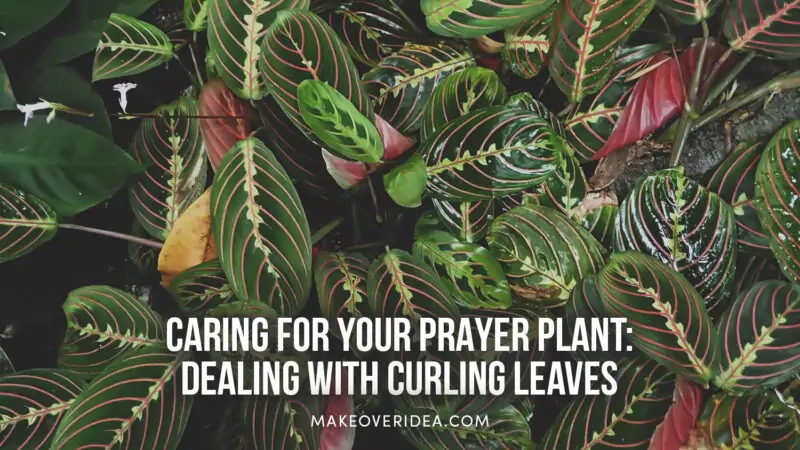
Nothing is more disheartening to a gardener than watching your beloved prayer plant leaves curling. If you have a prayer plant that’s starting to curl its leaves, you’re not alone! The good news is that this issue may be the result of some common issues with easy fixes.
The prayer plant (Maranta leuconeura) gets its name from the way in which it folds up at night, almost like hands in prayer. This stunning tropical beauty has become increasingly popular due to its striking foliage and relatively low maintenance needs.
However, one problem homeowners often encounter when caring for their Maranta plants concerns episodes when the plant’s leaves are curling inwards. Indeed, when leaves on the plant start curving or drooping down altogether, it spells trouble.
In this article, we will take an in-depth look into what causes your prayer plant’s leaves to start curling and strategies you can implement right away.
The Importance of Water for Your Prayer Plant
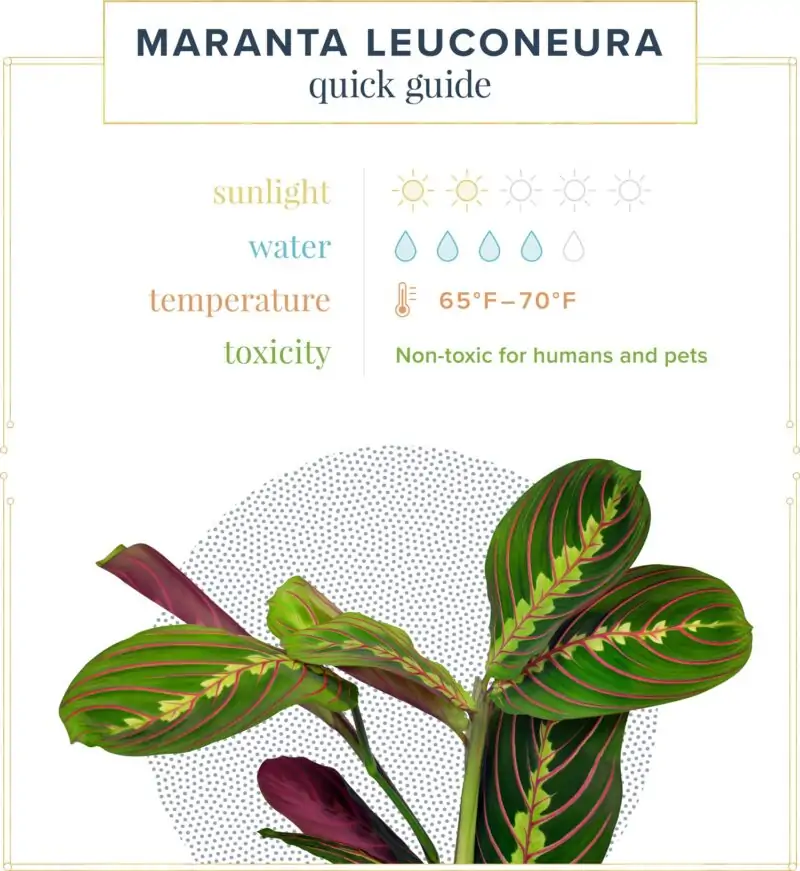
Water plays an essential part in plant care — either excess watering or underwatering could cause trouble by encouraging root disease/infections while simultaneously starving roots of necessary oxygen as well.
How does improper watering cause leaf curl in prayer plants?
Overwatering can lead to root rot – rot caused by fungal infections thriving on moisture, leaving soggy soil that lacks proper drainage might be the primary reason why your Maranta leaves curl. On the other hand, frequent underwatering can cause these houseplants to lose more water through transpiration than they receive via irrigation, causing dehydration. Severe stress can manifest symptoms similar to how humans react to dehydration, which can include dullness, yellowed leaf tips, curled leaf edges, and a limp, weakened stem.
To keep them healthy and develop deep, strong roots, prayer plants require consistently moist but not oversaturated soil. Rough estimates advise a weekly watering routine, but practice monitoring the pot/soil to provide accurate data, helping you adjust as needed – less during winter months and more during summer heat or dry weather when your plant cannot enjoy a humid environment.
The Role of Humidity in Preventing Prayer Plant Leaves Curling
Since prayer plants love their environment consistently moist, humidity is as crucial to them as water.
Can a lack of humidity lead to curling leaves?
Dry air can suffocate your prayer plant foliage and even lead to wilting by causing its moisture levels to decrease rapidly. Watering won’t solve the issue because it can’t restore the atmosphere needed for healthy growth and development.
However, you could purchase a humidifier or use an inexpensive pebble tray to keep the plant in a proper humid environment: Fill your metal/tin container with enough water to cover rocks; don’t overflow, then place the plant pot above while allowing gravels to buffer solid underground, preventing standing moisture issues inside the planter.
Are Your Prayer Plant Leaves Curling Due to Temperature Changes?
Move the plant away from its current place if direct sunlight beams down through windows onto a sturdy table or desk, as it may be too bright near your plant’s pot. Since prayer plants are tropical plants, slightly shaded clearings better reflect their natural habitats. You’ll want to find a space near sunlit areas with evenly dispersed temperature that provides adequate warmth, which they crave – typically ranging around 70-75 degrees Fahrenheit. Any fluctuations outside this safe zone could result in Maranta leaf curl!
Investigating Light Conditions: Is Your Prayer Plant Getting Enough Light?
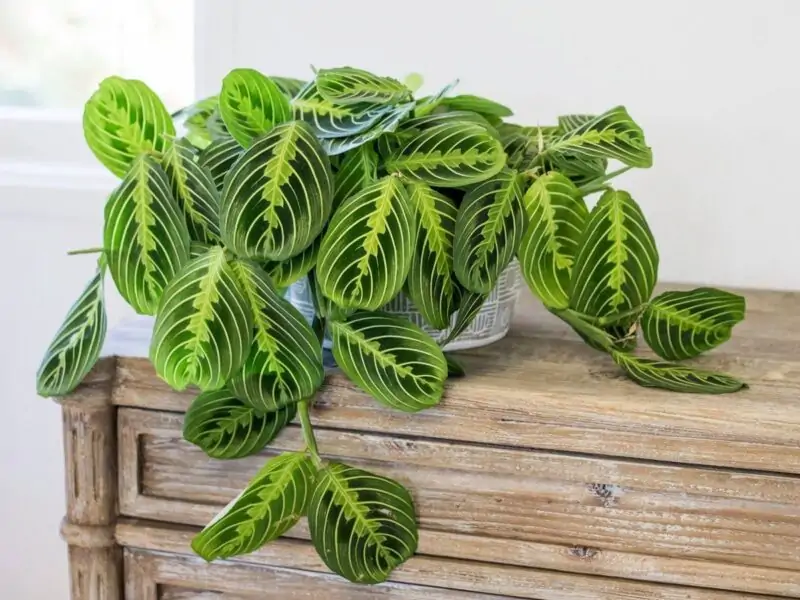
Always bear in mind that these plants like indirect light! Prayer plants require medium-light conditions like most tropical plants. When choosing a location for your prayer plant, consider the ambient luminosity within the area under consideration and ask yourself key questions:
- Does it ever get too dim? Does your plant receive too much direct sunlight?
- Are there any patterns provided from other sources nearby such as artificial lights, recessed lamps, or hanging devices, etc.?
A common reason behind Maranta’s curly leaves may relate directly to exposure time, lasting more than four hours per day, leaving the plant at risk of experiencing bleached and curled leaf tips, signifying severe stress and poor health.
Reasons Your Prayer Plant Leaves Start Curling: Nutrient Deficiencies
It’s essential never to overlook this factor when trying to diagnose issues with your prayer plant!
If you’re not providing an optimal nutrient balance, prayer plant may become weak or show visible side effects like curled leaves with an aesthetic but alarming yellowish hue. What’s more, formation of new leaves will be significantly hampered.
However, nutrient deficiency is often identifiable via typical leaf discoloration features:
- Iron – symptoms here include light green or yellowing of the interveinal spaces appearing where veins run along the leaves.
- Magnesium – Crucial to photosynthesis, a deficiency can exhibit purple areas between their veins in middle-lower sections while keeping other parts greener instead, due to a lack of Magnesium.
- Nitrogen: A deficiency leads to a yellow color, although, since presence is much higher than required, it is recommended to use slow-release natural fertilizers made from organic components.
How to identify and fix nutrient-related curling issues
Never treat without proper identification first! Instead, take time to examine your prayer plant carefully for early signs: significant changes near the corners of leaflets, yellowed tips/edges, changes in texture/growth patterns, an upright form replaced by limp structures or drooping, underweight stems. Once identified, use the exact type of fertilizer needed according to the description of the plant’s condition. Use proportionating factors to ensure the correct feeding ratio is included in the suggested application methods provided in product descriptions. If unsure, consult a specialist.
Is Your Prayer Plant Curling Due to Pest Problems?
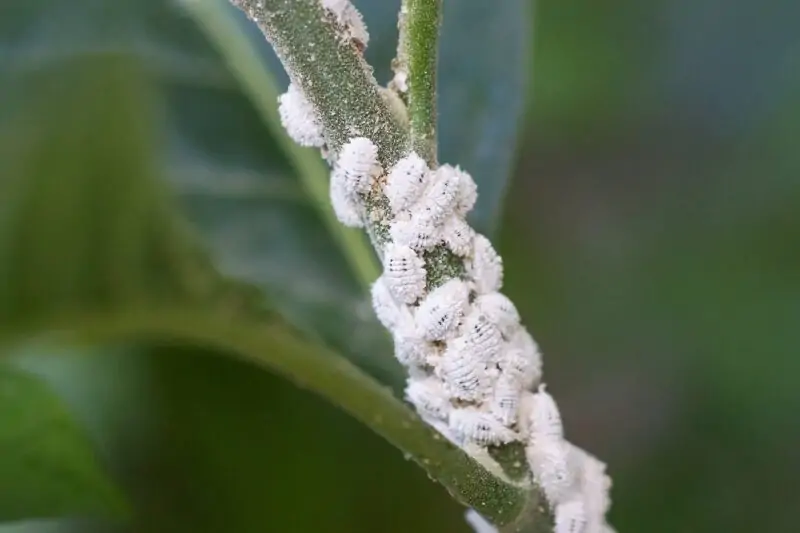
Pests are prayer plants’ worst nightmare! They not only cause physical harm and hamper new growth but also weaken your plant’s immune system over time. Keep watch and inspect the foliage whenever possible, examining every nook and cranny for signs of infestations, like the leaves turning brown.
Commonly known pests that could be bothering your Maranta include mealybugs, spider mites, and whiteflies. If left alone, these pests can spread quickly, causing severe damage and curiously inconsistent, sharp curves on the affected zones!
Recognizing the Causes of Prayer Plant Leaves Drooping
Droopy curled tips quite often come from environmental stressors rather than disease attacks, so it is crucial to address the root cause before reaching out for diagnosis or medicine.
What’s the difference between curling and drooping leaves?
Curled prayer plant leaves usually fold together mid-line, making a sort of cone shape, while drooping ones lose their structure and become soft and floppy along the edges.
Can Overcrowding Also Cause Prayer Plant Leaves to Curl?
Yes, overcrowding limits root space, raising water stress, and induces large amounts of negative pressure on roots trying to absorb necessary nutrients by sacrificing moisture. Overgrown plants will always tend to lose health reserves quickly, compromising healthy growth: repot them as soon as possible!
How to Save Your Prayer Plant from Curling Leaves: Tips and Tricks
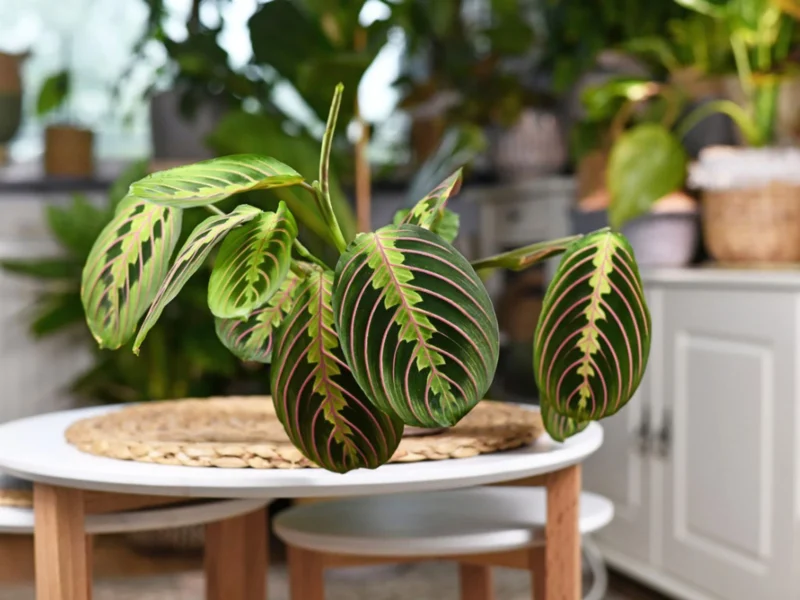
Fortunately, you can implement some measures to prevent leaf curl in your prayer plant:
- Keep your plant in an environment with consistent temperatures.
- Ensure good drainage so excess water doesn’t accumulate near the root zone.
- Water your Maranta at regular intervals but don’t overdo it.
- If tap water in your region contains chlorine, water your prayer plants using distilled water.
- Make sure you give your plant consistent hydration throughout its lifespan, creating a high humidity atmosphere using mist sprayers, humidifiers, pebble trays, or full environmental control systems if needed!
Creating an ideal environment for your prayer plant
- Locate a spot that receives indirect lighting.
- Keep the pot soil consistently moist, however, never let saturation occur underneath (ensure proper drainage holes).
- Mist spraying helps, and if you have a rose sprayer available, try allowing it to sit on the leaves instead of wiping them dry with towels!
- Use organic fertilizer at the advised dose, following the suggested frequency mentioned on the product packaging and labeling before application, to help deliver the optimal nutrient balance required by your plant.
Conclusion: Understanding and Preventing Prayer Plant Leaf Curl
Carefully monitoring key individual factors such as water, humidity, light, nutrition, pest infestations, and environmental stresses improves the overall care catered towards the specific needs of your prayer plant. This strengthens its immune system, helping it to fight back against common infections, minor troubles, and disturbances interfering with biological processes.
Now that you know the reasons behind your prayer plant leaves curling, use our guide to enjoy a healthy, thriving plant with vibrant foliage. By taking the time to understand and address the various causes of leaf curl, you can ensure the well-being and longevity of your beloved Maranta.